Table of Contents
Introduction
Agriculture has remained the pillar of India’s economy, where almost half of the population is employed and more than one billion people are fed. With population growth at high speed, decreasing land for cultivation, and altering climatic patterns, older methods of farming alone cannot fulfill the increasing needs of food and nourishment.
This is where modern farming methods play their part, and they are a revolutionary change in the cultivation, handling, and harvesting of crops. These new methods combine science, innovation, and sustainability to produce an improved and efficient agriculture system.
Plowing fields and planting seeds is no longer the only thing modern agriculture is all about. It now entails strategic fusion of agriculture and modern methods to provide maximum efficiency with little wastage of resources.
For instance, farmers across most regions in India are embracing drip irrigation to save water, hydroponics to produce crops without the use of soil, and drones to inspect crop health.
These innovations not only maximize yield but also counter issues such as soil erosion, lack of laborers, and irregular weather conditions.
By adopting modern farming methods, India is on the cusp of a revolution that enhances farmers’ revenues, increases food security, and encourages sustainable methods.
This transformation isn’t merely mechanization but also the empowerment of farmers through knowledge, tools, and technologies that enable them to excel in a competitive global agricultural economy.
As the 21st century progresses, modern farming will redefine Indian agriculture as it goes smarter, greener, and future-ready.
Advantages of Modern Farming Methods
Improved Crop Yield
Perhaps the biggest benefit of modern farming methods is that they can enhance crop yield quite drastically. Old-fashioned farming tends to rely heavily on rain, the use of human muscle power, and legacy tools, which put considerable constraints on yields per acre.
Conversely, modern farming methods such as precision farming, drip irrigation, and hybrid seeds enable farmers to get more from the same land.
For instance, precision farming uses sensors and satellite imagery to determine the exact needs of crops, ensuring that water, fertilizers, and pesticides are applied in the right quantity at the right time. This reduces wastage and enhances yields significantly.
As a result, farmers not only meet the rising food demand but also improve their economic stability. When farming and advanced technology converge, small-scale farmers can challenge large commercial producers, closing the productivity gap and playing a part in national food security.
Improved Resource Utilization
India is confronted with serious agricultural issues of water scarcity, diminishing fertility of the soil, and excessive use of chemical fertilizers. Using modern farming methods, farmers can utilize these resources more efficiently.
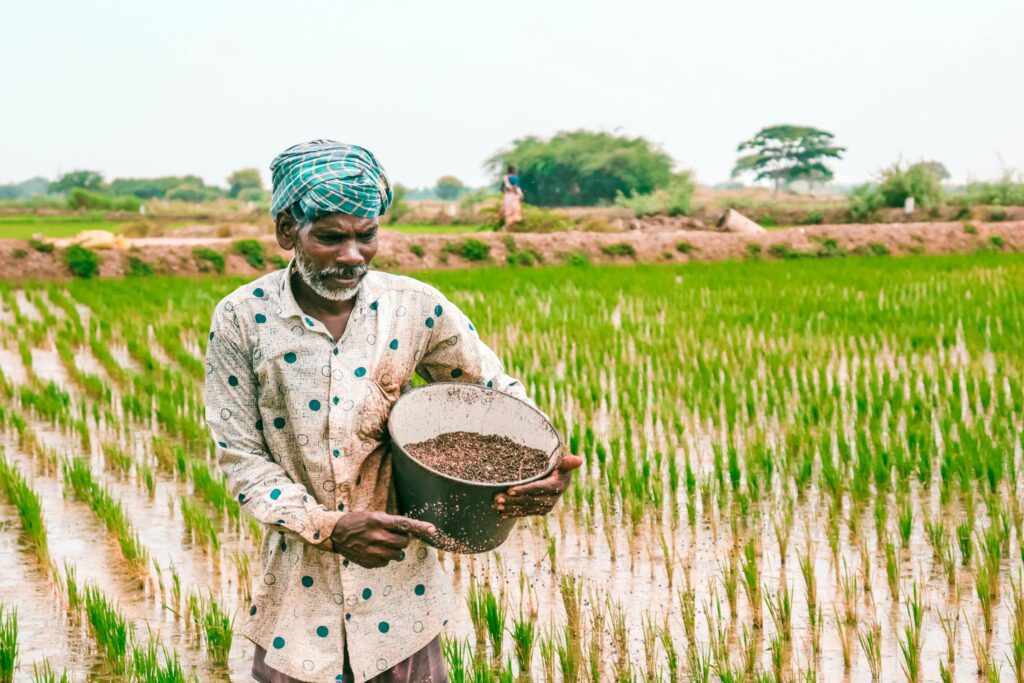
Methods such as aquaponics and hydroponics enable crops to thrive on tiny amounts of water, while soil health cards and organic alternatives minimize dependence on chemicals. Sprinkler and drip irrigation see each drop count by efficiently utilizing water, which is conserved in water-scarce areas.
Moreover, smart sensors track moisture levels in the soil, advising farmers when and how much water to apply. These practices not only conserve water and soil fertility but also reduce production expenses.
With optimal use of resources, agriculture becomes both environmentally friendly and economically sustainable, which will make the farming system sustainable for generations to come.
Increased Sustainability and Eco-Friendliness
The incorporation of modern farming methods is also essential in developing a sustainable agricultural system. Traditional practices tend to create issues like soil erosion, groundwater loss, and greenhouse gas emissions.
By introducing eco-friendly innovations like organic farming, integrated pest management, and solar-powered irrigation, farmers reduce their carbon footprint while safeguarding biodiversity.
Moreover, climate-smart technologies, such as drought-resistant seeds and renewable energy-based farming equipment, prepare agriculture for the challenges of climate change.
This sustainable approach ensures that farming does not compromise the environment while still meeting human needs. By synchronizing agriculture with contemporary technology, India is able to create a green revolution that maintains economic development alongside nature conservation.
Methods of Contemporary Farming
Precision Farming
Precision farming is among the most significant contemporary farming methods being implemented in India. It is based on sophisticated equipment like GPS technology, satellite imagery, and sensors to maximize farm-level management.
The aim is to use the correct quantity of water, fertilizer, and pesticide in the correct place and time. For instance, crop growers can utilize soil sensors to determine nutrient deficiencies in areas of a field, thereby fertilizing only where necessary instead of spraying chemicals over everything.
Not only does this increase yield but also minimize expenses and harm to the environment. By integrating farming and contemporary technology, precision farming converts conventional practices into information-based decision-making systems.
Farmers receive real-time information about their farms, and agriculture becomes more profitable and smarter.
Hydroponics and Soilless Farming
Hydroponics is a new technique under contemporary modern farming methods where crops are cultivated without soil through nutrient solution in water. This method is best suited in urban cities where land is scarce but there is high demand for fresh vegetables.
Farmers can grow crops vertically in controlled environments, achieving high yields in smaller spaces. Hydroponics conserves up to 90% more water than traditional farming and allows year-round cultivation, regardless of weather conditions.
Aquaponics, a related method, combines fish farming with hydroponics, creating a sustainable cycle where fish waste provides nutrients for plants, and plants filter water for the fish.
These techniques display how current agricultural methods could change the way food is produced by keeping resource consumption to a bare minimum.
Drip and Sprinkler Irrigation
Effective irrigation systems such as drip and sprinkler irrigation systems are Indian agriculture’s saviors. Flood irrigation is wasteful and consumes much water, but current farming methods ensure water directly reaches plant roots.
Drip irrigation provides water drop by drop, while sprinkler irrigation replicates rainfall, distributing water uniformly across fields. Both of these not only save water but also avoid soil erosion and nutrient run-off.
For farmers in areas of drought, this combination of agriculture with modern farming methods provides a lifeline, helping them to grow crops even during times of meager water supply.
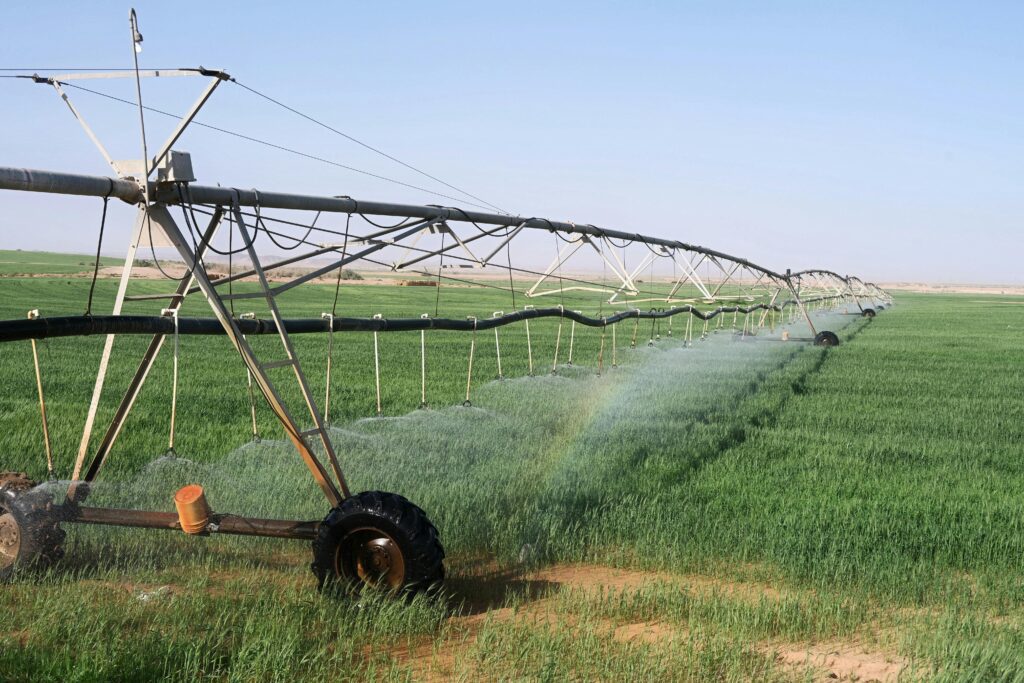
In addition, drip irrigation can be used with fertigation systems so that nutrients can be applied together with water, promoting crop health as well as yield.
Drones and Smart Machinery
Drones and machines are the more advanced aspect of modern farming methods. Drones assist in monitoring the health of crops, charting out large fields, and even spraying fertilizers and pesticides with accuracy.
This makes labor minimal and ensures even application of resources. In the same way, intelligent tractors and harvesters with sensors and AI technology are able to carry out operations such as sowing, weeding, and harvesting more efficiently compared to human labor.
These technologies save time, save money, and enhance productivity. The farmer no longer has to depend on guesswork; instead, he can make use of real-time data from machines. These modern farming methods introduce speed, precision, and scalability to Indian agriculture, making it ready for global competition.
Obstacles to Adopting Contemporary Farming Methods
High Upfront Costs
One of the key hindrances to adopting contemporary farming methods is the high upfront cost. Equipment such as precision farming technology, drip irrigation systems, and automated equipment demands huge amounts of capital expenditure, which small and marginal farmers in India may not be able to afford.
Despite the fact that these technologies hold out prospects of long-term benefits through enhanced productivity and less wastage of inputs, the initial costs may deter adoption.
Financial institutions and subsidies from the government have a major role to play here, but awareness and access are lacking in rural areas. Lacking adequate financial assistance, much of the farmers depend on conventional practices, thus not able to reap the potential of farming and modern farming methods.
Filling this gap is important for large-scale adaptation of newer methods.
Lack of Technical Knowledge
Lack of technical knowledge among farmers is another major problem. Contemporary agriculture technology tends to involve sensors, data analysis, or autonomous machinery. Most farmers, particularly in rural areas, lack access to training or education in such innovations.
Precision farming, for example, requires expertise in soil testing, nutrient regulation, and data analysis, which proves challenging for a farmer used to traditional practices. Lack of guidance may not result in expected outcomes, and frustration and disbelief are likely to follow.
Extension programs, workshops, and online platforms can bridge such a knowledge gap and facilitate use of modern farming methods by farmers.
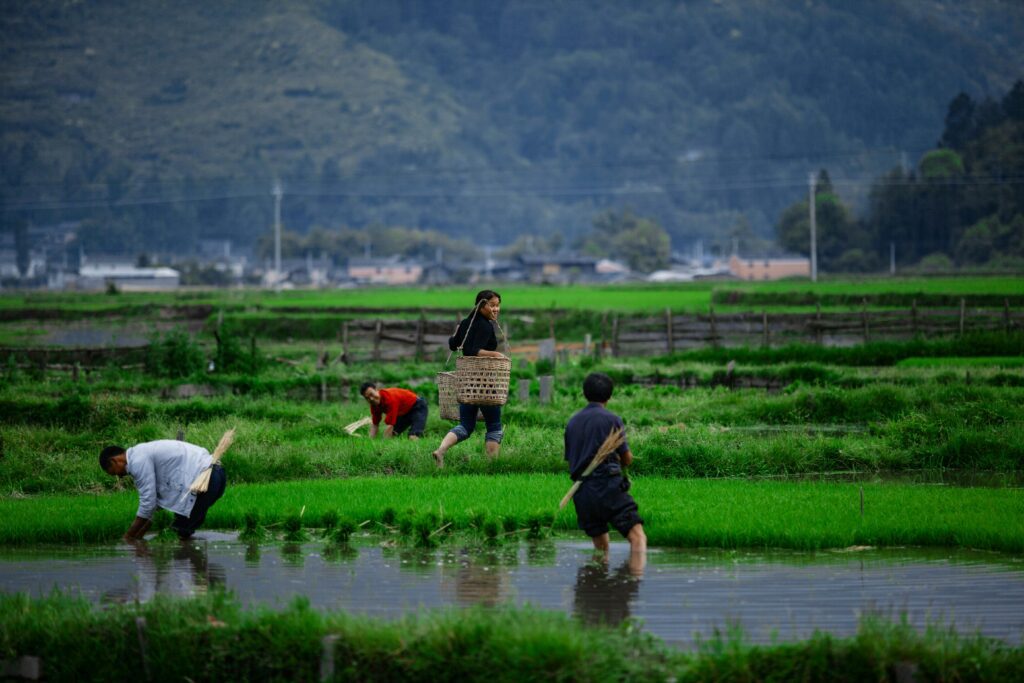
Infrastructure Shortcomings
Infrastructure shortcomings too pose challenges to the use of modern farming methods in India. Adequate electricity, internet, cold storage, and transport infrastructure are essential for using sophisticated technologies.
For instance, hydroponics or drip irrigation systems need consistent electricity supply, and drones and precision tools need internet connectivity for data synchronization. Such facilities in most rural areas lack, and it becomes challenging for farmers to enjoy full benefits of agriculture and modern methods.
Filling infrastructure gaps is very important to see that modern practices reach even the most remote areas, enabling farmers to enhance productivity and sustainability.
Resistance to Change
Resistance to change is also a problem Indian farmers face. They have used conventional methods for centuries and could be reluctant to embrace modern farming methods. Fear of failure, lack of exposure to success stories, and ignorance about returns may keep farmers from trying out new methods.
Peer influence, cultural habits, and generational mindset also contribute to their reluctance. Breaking down this barrier needs successful awareness programs, demonstration farms, and peer-to-peer learning schemes, which reveal the material payoffs of farming and new technology and motivate farmers to adopt.
Climate and Environmental Constraints
modern farming methods provides solutions to most of the challenges, but environmental and climate constraints may still restrict its success. Unpredictable rain, harsh temperatures, and land degradation may influence the performance of advanced systems such as drip irrigation, hydroponics, or precision agriculture.
For example, extensive droughts might lower the efficiency even of the most sophisticated irrigation techniques, while flooding will destroy equipment and crops.
Farmers must mix advanced methods with climate-resilient strategies, including seeds resistant to drought and soil conservation techniques, to counter these risks.
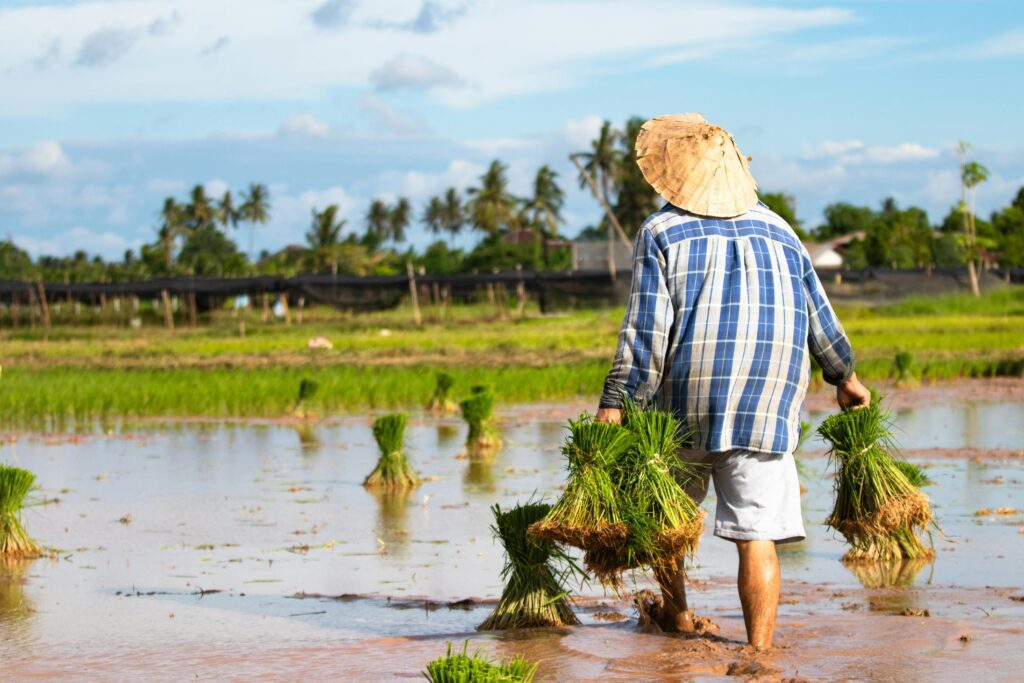
Through the knowledge of environmental limitations, India can reap the maximum advantages of modern farming methods while keeping them sustainable.
Solutions and Strategies to Overcome Challenges
Government Assistance and Subsidies
To counter the prohibitive initial investment of modern farming methods, support from the government is of paramount importance. India has brought forward various programs of subsidy, including the Pradhan Mantri Krishi Sinchayee Yojana (PMKSY) for sprinkler and drip irrigation and schemes for precision farming equipment.
These programs lighten the economic load on farmers, and they can invest more in agriculture and modern methods. Low-interest loans and funds from cooperative banks and agricultural organizations can also aid small-scale farmers in obtaining sophisticated equipment.
By raising awareness levels about these initiatives, more farmers will use modern approaches, enhancing productivity and sustainability and rural living standards.
Farmer Education and Training
Information is instrumental in applying modern farming methods effectively. Training initiatives, workshops, and e-learning platforms may provide farmers with the skills to operate advanced tools and techniques effectively.
For example, education on soil health tracking, drone operation, or hydroponic systems enables farmers to take informed decisions. Extension services by agricultural universities and NGOs may also provide field guidance to ensure farmers acquire hands-on experience.
By bridging the knowledge gap, education guarantees that modern farming methods are utilized to the fullest, yielding maximum output at minimum cost, and building confidence amongst farmers towards embracing new solutions.
Development of Infrastructure
Rural infrastructure development is important in facilitating modern farming methods. A stable electricity supply, internet access, cold storage, and transportation systems improve the effectiveness of modern practices such as automated irrigation, drones, and hydroponics.
Setting up agri-tech parks and regional hubs can equip farmers with machinery access, repair facilities, and technical expertise. With enhanced infrastructure, India can see to it that the advantages of agriculture and modern methods are available to even rural farming communities, so they can avail high-tech solutions without any hindrance.
Strong infrastructure also facilitates supply chain activities, curbing post-harvest losses and facilitating improved market access for farmers.
Encouraging Cooperative Farming
Cooperative agriculture is a good way to overcome economic and technical hurdles in embracing new agricultural methods. Farmers can come together and collectively buy expensive equipment, exchange experiences, and gain access to training sessions.
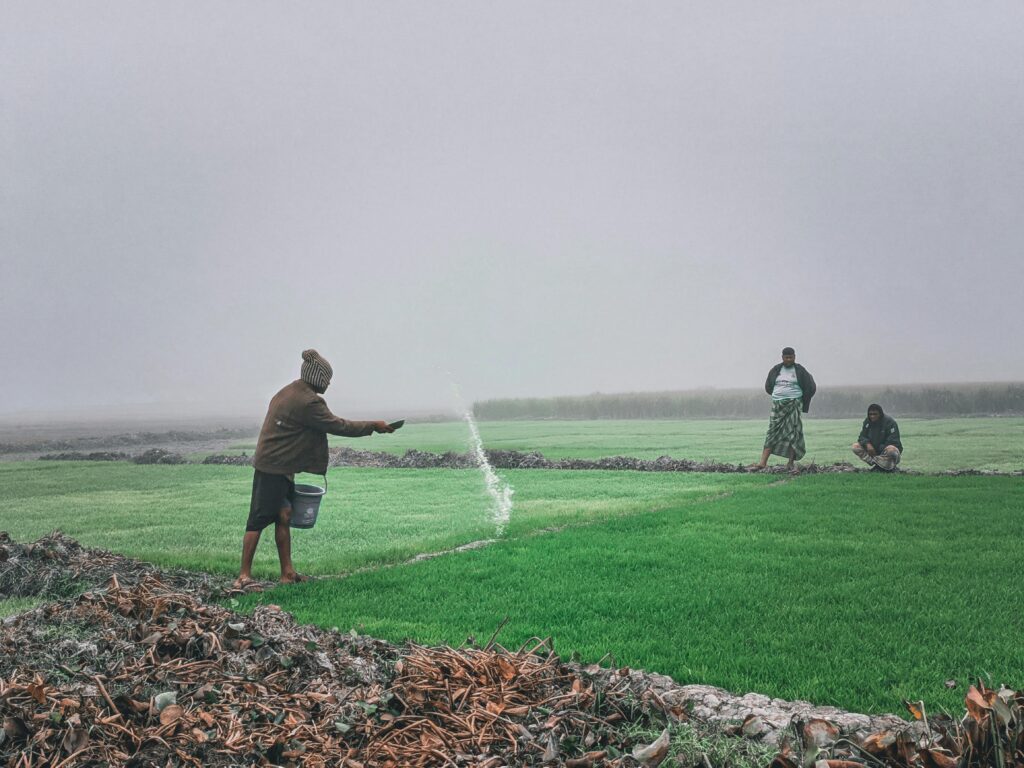
This diminishes costs for the individual and realizes economies of scale, thereby making high-tech options within reach. Bulk marketing can also be made possible through cooperatives, allowing farmers to bargain for higher prices and minimize reliance on middlemen.
Through collaboration, cooperative farming enables even marginal and small farmers to gain from agriculture as well as recent technology, leading to enhanced productivity, income, and resilience.
Climate-Resilient Practices
In order to negate environmental limitations, farmers can marry agriculture and modern methods with climate-resilient farming. The employment of drought-resistant seeds, integrated pest management, and water-saving strategies makes farms more resistant to adverse weather conditions.
Technologies such as soil moisture sensors, weather apps, and automated irrigation assist farmers in responding to climatic fluctuations.
By coupling these methods with advanced farming practices, Indian agriculture will be able to preserve productivity, decrease risks, and achieve sustainable growth even in adverse environmental conditions.
FAQs
1. What are modern farming techniques, and why are they significant?
Modern farming methods are the latest techniques of cultivation that involve the application of technology, science, and sustainability in order to promote productivity and efficiency.
Modern farming methods are needed in India to fulfill increasing food demand, save resources, and solve issues such as climate change and a lack of labor.
Farmers use the integration of agriculture and modern methods to optimize irrigation, improve soil, and maximize production while minimizing environmental impact.
2. How does modern technology and agriculture enhance crop productivity?
Combining farming and technology enables farmers to keep track of the crops, soil, and use of water with accuracy. Precision farming, hydroponics, and automated irrigation help provide crops with precise nutrients and water requirements.
Not only does it enhance production but also reduce wastage. For instance, drones can identify the onset of crop diseases, allowing for timely interventions, thereby directly enhancing productivity.
3. Do new agriculture methods suit Indian small-farmers?
Yes, new agriculture methods can suit small-farmers, provided they are complemented by government subsidies, cooperative farming practices, and low-cost technology. Methods such as drip irrigation, cheap sensors, and vertical farming involve comparatively lower investments but produce high outcomes.
If smallholders take up modern agriculture technology, they can enhance profitability and sustainability without requiring large land resources.
4. What is the role of technology in sustainable agriculture?
Technology has a central role to play in sustainable agriculture. Some of the latest tools of modern agriculture technology are soil sensors, water-conserving irrigation systems, and climate-optimizing machines.
These technologies minimize the consumption of water, fertilizers, and pesticides with maximum yield. Sustainable agriculture also guarantees long-term soil sustainability and environmental conservation, which is essential for the future of Indian agriculture.
5. How do farmers initiate modern farming methods?
Farmers should initiate by determining their needs, resources, and objectives. Starting with easy methods such as drip irrigation, soil testing, or organic methods is advisable. They can embrace advanced technology like drones, precision farming, or hydroponics in the long run.
Utilizing government schemes, training courses, and agricultural extension services will also help them implement modern farming methods efficiently.
Conclusion
The use of advanced agricultural methods is a revolutionary period in Indian agriculture, a new way of growing, developing, and harvesting crops. By combining modern technology with agriculture, productivity is boosted, resource usage optimized, and sustainability achieved.
From precision agriculture and drip irrigation to hydroponics and drone monitoring, the processes not only improve yields but also minimize environmental impact and labor dependence.
Although obstacles like high capital requirements, absence of technical information, infrastructure deficit, and climatic limitations are present, specific solutions like government incentives, farmer training schemes, cooperative agriculture, and climatic resilience offer effective avenues for overcoming them.
With effective application, advanced agronomical practices enable farmers to be more efficient, competitive, and future-ready, making available food for a burgeoning population.
India is on the threshold of an agricultural revolution, with science and tradition coming together to usher in a smarter, greener, and more sustainable agricultural ecosystem.
Farmers, government and policymakers, and stakeholders need to work in tandem to unlock the full potential of cutting-edge agriculture technology. With these innovations, farmers can enhance their livelihoods, save natural resources, and be part of a successful agricultural future.
Now is the time to act—embracing modern farming methods is not only a choice but also a need for creating a strong and prosperous farming industry in India.

Pingback: 7 Proven Equipment for Farmers: Boost Yields with New Tractors & Best Harvester Price -
Absolutely! Modern farming goes beyond just higher yields—it emphasizes environmental conservation and maintaining soil health for the long term. Today’s farming equipment is designed with sustainability in mind, helping farmers work efficiently while protecting natural resources.
Pingback: Soil Moisture Sensor: 5 Effective Applications with Soil Moisture Sensor Arduino & Arduino Sensor Integration -
Absolutely! Integrating a soil moisture sensor with an Arduino system is a smart step toward modernizing farming. Using Arduino’s open-source platform allows farmers to monitor soil conditions in real time, optimize irrigation, save water, and boost crop health efficiently.